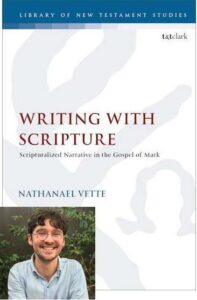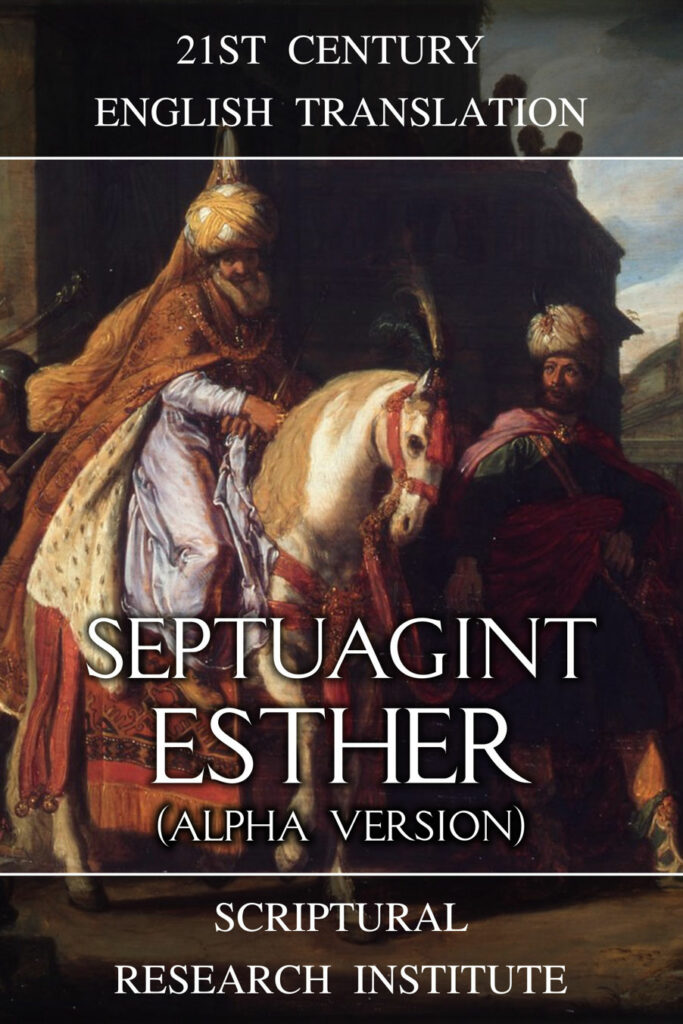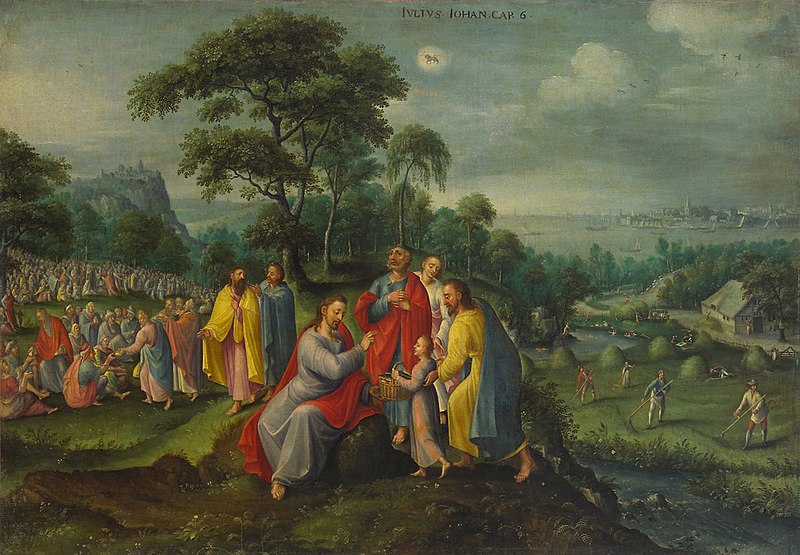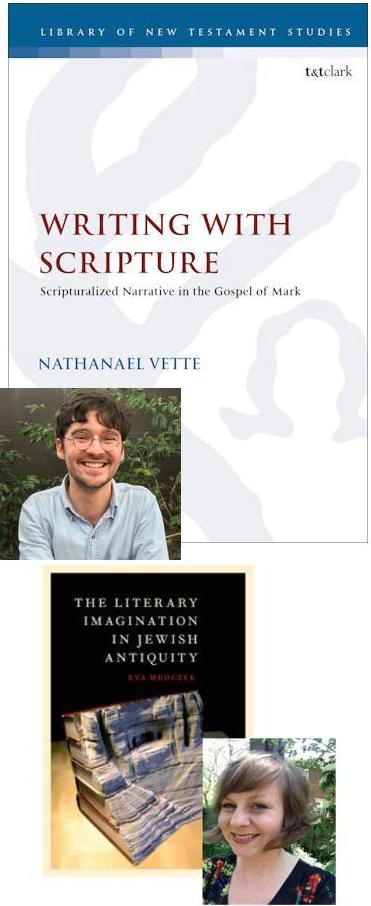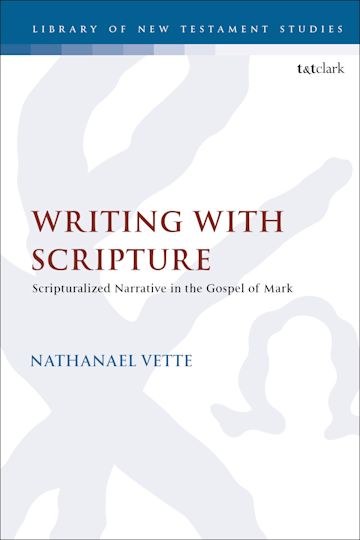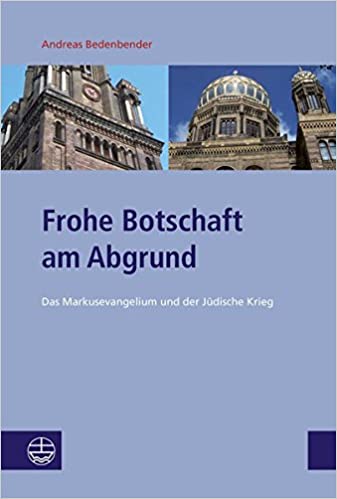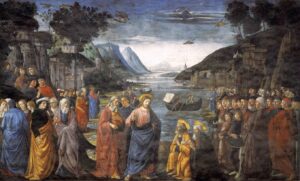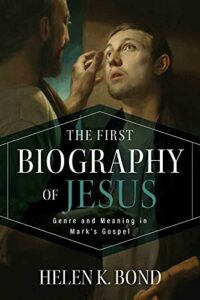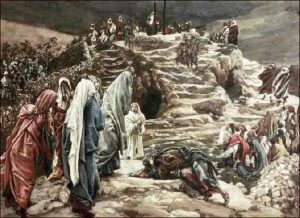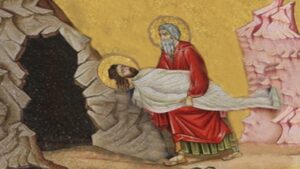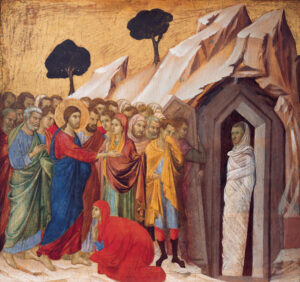Back again! I got waylaid again for a couple of weeks by a swathe of new reading I had to get on top of before writing again. This time it was a few works by Markus Vinzent, his most recent one (Christi Thora =”Christ’s Torah”) and some earlier ones I had let slide for too long; the arrival of Andreas Bedenbender’s published thesis (Der Gott der Welt tritt auf den Sinai = “The God of the World Steps on Sinai”) that seemed required reading given the many references to it in his later works; the arrival via an interlibrary loan of a long-standing request I have had for a Festschrift for Martin Hengel; the arrival of another older double-work by Joseph Turmel (aka Delafosse — works on Revelation and the Gospel of John); and finally the acquisition of Hermann Detering’s Paulusbriefe ohne Paulus? (=Paul’s Letters without Paul?). They are all related to questions concerning our canonical Book of Revelation, the Enoch trajectory of thought in Second Temple Judaism, and the origins and dating of both our canonical gospels and letters of Paul. (Oh, and a publisher of another work even agreed to send me a review copy that retails over $A200 — so it feels like I’ve been overwhelmed with Christmas goodies this past fortnight, though many of them have required some “assembly” — that is, translation. Thank god for DeepL and Google Translate.) — Sadly, the only book I have not had is the one I contributed a chapter for: the editors last year promised me a complimentary copy but it never arrived, not even an electronic version.
After that little bit of bio update, here’s something of more widespread interest for readers here.
How do we know that canonical gospels, or at least those attributed to Mark and Matthew, were written in the first century?
That the Gospel according to Mark was written around 70 CE and in direct response to that war of 66-73 CE is mainstream opinion. The Gospel according to Matthew, it is said, followed within a decade.
How do we know?
The answer usually offered is Mark 13, the “Olivet Prophecy” of Jesus, the climactic verses applying to the armies of Titus stamping through Jerusalem and destroying its temple.
14 “When you see ‘the abomination that causes desolation’ standing where it does not belong—let the reader understand—then let those who are in Judea flee to the mountains. 15 Let no one on the housetop go down or enter the house to take anything out. 16 Let no one in the field go back to get their cloak. 17 How dreadful it will be in those days for pregnant women and nursing mothers! 18 Pray that this will not take place in winter, 19 because those will be days of distress unequaled from the beginning, when God created the world, until now—and never to be equaled again.
. . . .
24 “But in those days, following that distress,
“‘the sun will be darkened,
and the moon will not give its light;
25 the stars will fall from the sky,
and the heavenly bodies will be shaken.’[c]
26 “At that time people will see the Son of Man coming in clouds with great power and glory.
We often read that the Gospel of Matthew was written for a different community up to a decade later, clearly after the “Gospel according to Mark” came to their attention, so compare Matthew’s chapter 24:
15 “So when you see standing in the holy place ‘the abomination that causes desolation,’ spoken of through the prophet Daniel—let the reader understand— 16 then let those who are in Judea flee to the mountains. 17 Let no one on the housetop go down to take anything out of the house. 18 Let no one in the field go back to get their cloak. 19 How dreadful it will be in those days for pregnant women and nursing mothers! 20 Pray that your flight will not take place in winter or on the Sabbath. 21 For then there will be great distress, unequaled from the beginning of the world until now—and never to be equaled again.
. . . .
29 “Immediately after the distress of those days
“‘the sun will be darkened,
and the moon will not give its light;
the stars will fall from the sky,
and the heavenly bodies will be shaken.’
30 “Then will appear the sign of the Son of Man in heaven. And then all the peoples of the earth will mourn when they see the Son of Man coming on the clouds of heaven, with power and great glory.
One can understand a writer opining that Jesus will return “very soon” in the wake of “the abomination of desolation” that he believes is part of the events of around 70 CE, but why does Matthew, up to ten years later, repeat that view? Had he not noticed that Jesus did not return as prophesied in Mark?
But was not Matthew said to be writing for a completely different community half a generation later? So we do have to ask: why does Matthew repeat so much of Mark verbatim? Would we not expect a member of a community removed from that of Mark, and up to quite some years later, to feel compelled to re-write an earlier text for another audience in somewhat different words that reflected the different community of readers at another time?
If so, why, we must ask, does Matthew’s gospel sound so much like it was written in the same workshop where and when Mark’s gospel was written? Where in Matthew’s text are those little indicators that the author was immersed with a quite different group of readers in mind and with a different time perspective?
And where is the independent evidence, the external indicators, that inform us that the Gospel according to Mark was known by anyone before Irenaeus in the late second century?
In response to that question, one can expect to hear a claim that Justin Martyr speaks of Jesus changing the names of Simon (to Peter) and James and John (to sons of Boanerges), and since Justin Martyr was writing in the mid-second century and the Gospel of Mark documents the same name-changes, it follows that Justin was drawing upon his knowledge of the Gospel of Mark. That sort of reasoning is clearly fallacious, however. Justin in the same documents says many other things that are not found in the Gospel of Mark — that Jesus was born in a cave, that fire consumed the Jordan when Jesus was baptized, that Pilate conspired with Herod against Christ — none of which are found in Mark. It follows, surely, that we do not know what Justin’s sources were and that we cannot confirm that he knew the Gospel of Mark on the basis of one limited cluster of overlaps.
In order to sustain a date for the composition of the Gospel of Mark (and Matthew) to the first century, we need to propose hypotheses to explain why that Gospel does not appear in other sources until the late second century with Irenaeus.
By normal viewpoints, one would need to propose that the gospel was composed without any attribution to some kind of authorship in spite of the fact that external witnesses clearly referencing the gospel identify it as “according to Mark”.
One has to propose that (and why) the gospel of Mark was of little relevance or knowledge among Christian communities beyond the immediate community of its author for quite some years — right into the late second century!
One has to propose why the Gospels of Matthew and Luke follow the Gospel of Mark so closely despite their respective readerships having had decades of different inputs and different needs and questions that related to Jesus and the “good news”.
You know where I am leading. There are fewer hypotheses required to justify a second-century provenance of the Gospel of Mark. “Few hypotheses” is a good thing, says Occam.
I’ll cover arguments related to this question of Gospel origins in future posts. The general theme also requires dealing with the Book of Revelation since many leads seem to point to that work being one of the earliest composed by a “Christian”.
Much to write about. Much more to read.
Like this:
Like Loading...

